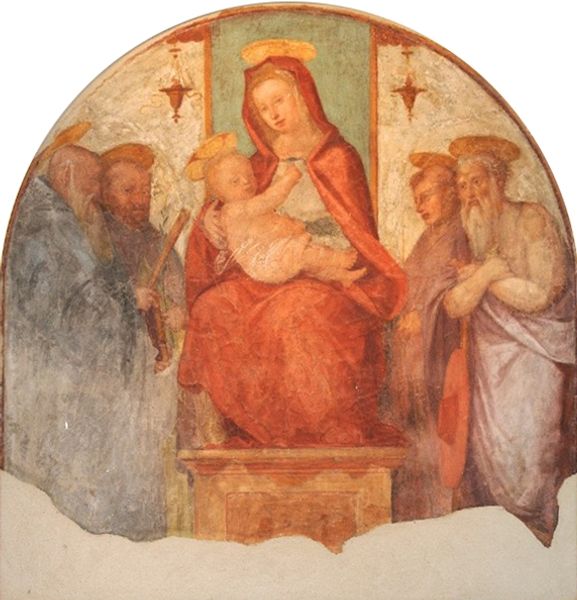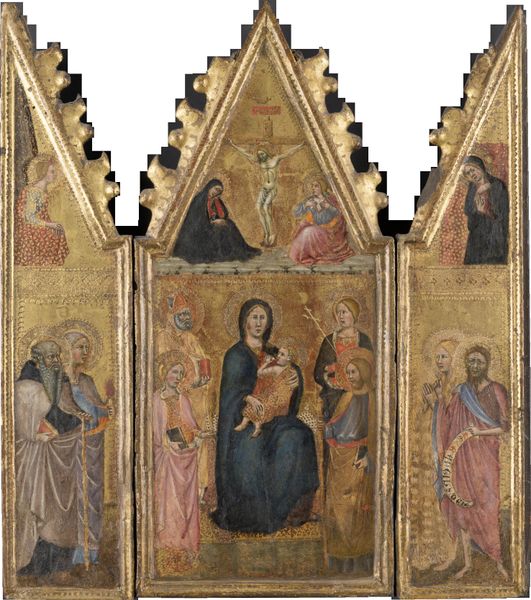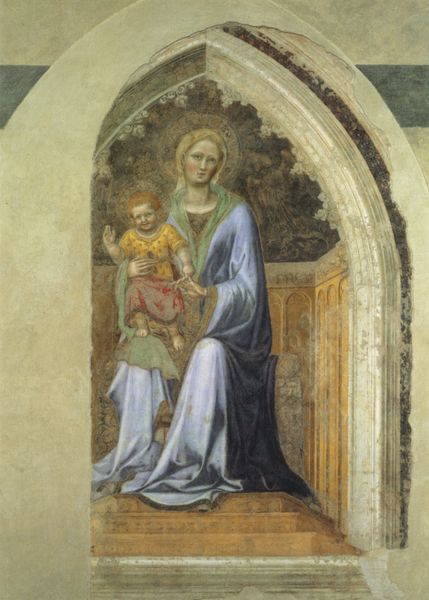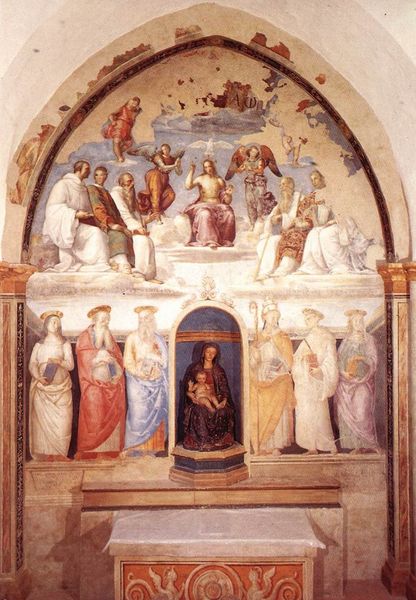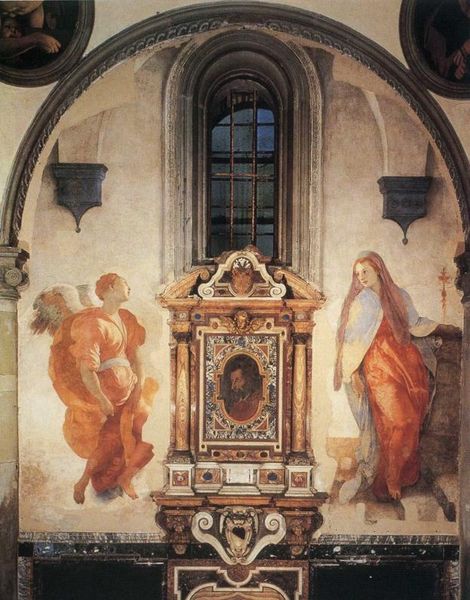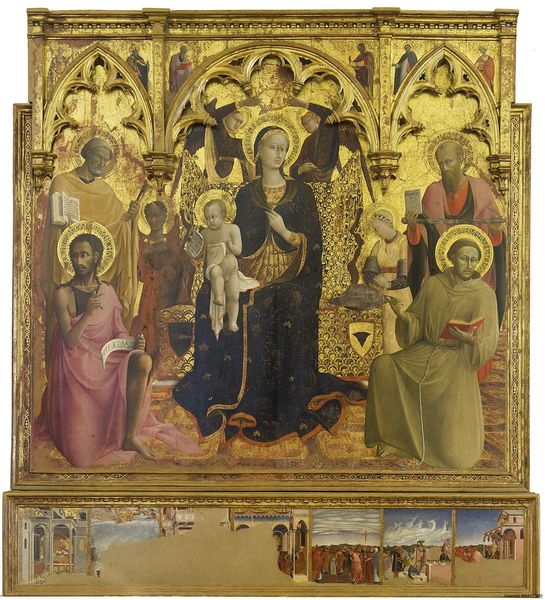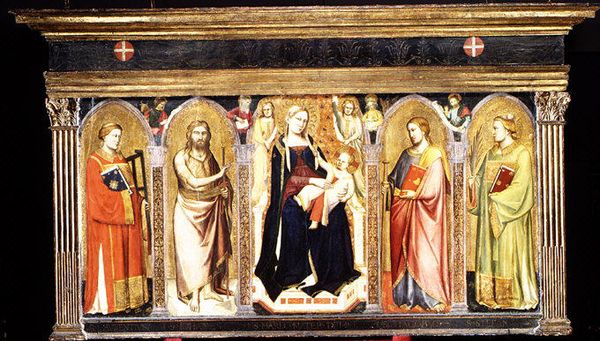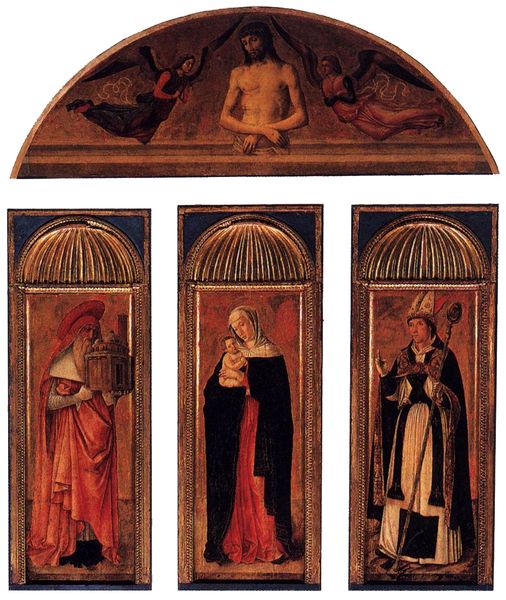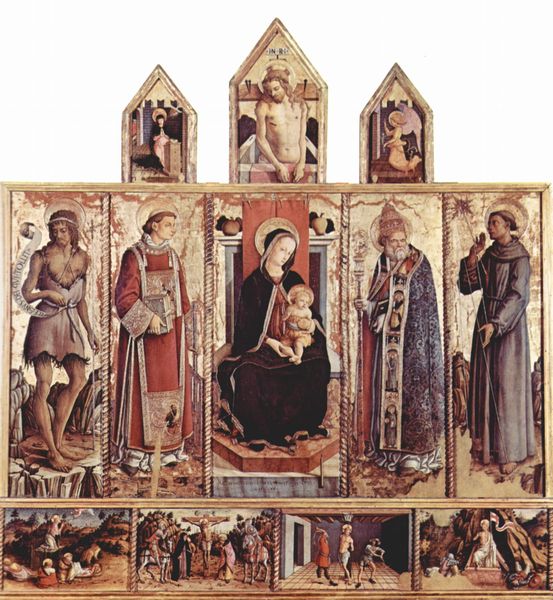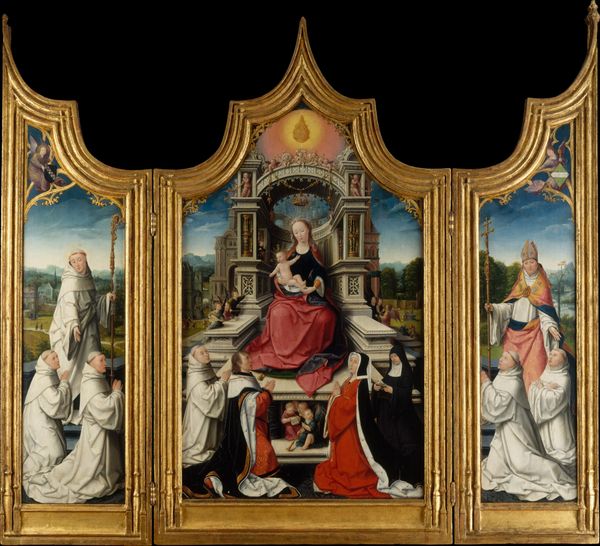
tempera, painting
#
portrait
#
high-renaissance
#
narrative-art
#
tempera
#
painting
#
oil painting
#
christianity
#
italian-renaissance
#
virgin-mary
Copyright: Public domain
Curator: This tempera on panel, "Madonna delle Grazie," was completed in 1522 by Pietro Perugino. What strikes you first about it? Editor: Its muted palette, definitely. It has a kind of subdued, almost melancholy feel to it, doesn't it? Despite the clear attempt to depict a scene of grace and serenity. Curator: Well, the High Renaissance certainly favored idealized forms and balanced compositions, but the real story often lies in the details. Notice the arrangement of figures—the Virgin Mary in the center, flanked by saints in separate compartments? This organization speaks to established traditions of religious presentation and the very specific role imagery played within it. Editor: You mean its function as a focal point for faith? I see the angels hovering above, the landscape offering a pastoral backdrop. It is so overtly religious and instructive. Who exactly were these figures to the side? And how were viewers at the time supposed to understand the work in a cultural context? Curator: The figures flanking the Virgin are Saint Benedict and Saint Placidus; two holy monks in habits standing in appreciation. In Perugino's time, such artwork often acted as visual aids for conveying complex theological concepts to a largely illiterate population. The serene, graceful figures reinforce specific messages related to prayer, redemption, and divine love. The gestures, such as the Madonna’s raised hands, carry significant symbolic weight within that cultural framework. Editor: It's interesting how these symbols continue to resonate, even if their specific meanings have become somewhat obscured. We now see them as artistic conventions but once, they served as immediate communication tools for an entire community. It makes me wonder about the power that visuals still hold today— and the messages they subtly impart. Curator: Absolutely, considering historical, cultural, and psychological dimensions allows us to truly appreciate these forms. They speak volumes, if you listen closely. Editor: Well said. It really underscores how art like this Madonna operates on multiple levels, simultaneously embodying faith, aesthetic beauty, and complex historical meanings.
Comments
No comments
Be the first to comment and join the conversation on the ultimate creative platform.
